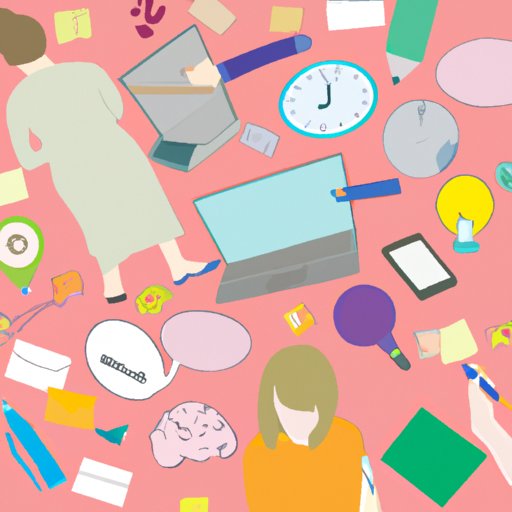Introduction
Technology has become an integral part of education in the 21st century. From smart boards to online learning platforms, technology is used in classrooms around the world to enhance the student experience. However, while technology can be a useful tool, it can also have a negative impact on education. This article will explore how technology can have a detrimental effect on students’ learning experiences.
Increased Distraction
One of the major ways that technology can have a negative impact on education is through increased distraction. Students are often tempted to use their devices to access social media or play games instead of focusing on their studies. According to a study by Pearson, “73% of teachers report that digital devices are a frequent distraction in the classroom.” With so many distractions available to students, it can be hard for them to stay focused on their work.
Lack of Social Interaction
Another way that technology can have a negative impact on education is through a lack of social interaction. As more and more schools adopt online learning platforms and other technologies, students are spending less time interacting with their peers and more time interacting with computers and devices. This can lead to a decrease in social skills, as students are not given the opportunity to practice communication and collaboration in person. A study by the University of California, Irvine found that “students who actively engage in face-to-face interactions have higher academic performance than those who do not.”
Inadequate Preparation for Real World
Another way that technology can have a negative impact on education is through inadequate preparation for the real world. Technology can give students a false sense of security when they enter the workforce. They may be accustomed to relying on technology to solve problems, but this isn’t always available or reliable in the real world. As such, students may find themselves ill-equipped to handle the challenges of the workplace if they haven’t been taught how to think critically and solve problems without the aid of technology.
Diminished Critical Thinking Skills
Technology can also lead to diminished critical thinking skills. Students may become too reliant on algorithms and pre-packaged solutions to solve problems, rather than developing their own creative solutions. This can limit their problem-solving abilities, as they may not have the skills to identify and address issues on their own. A study conducted by the American Psychological Association found that “the use of technology can lead to a decrease in critical thinking skills, as students rely too heavily on technology to provide answers.”
Reduced Creativity
Technology can also reduce creativity. By providing pre-packaged solutions to problems, technology can limit students’ ability to think outside the box and come up with creative solutions. A study by Stanford University found that “students who use technology to complete tasks are less likely to develop creative problem-solving skills.” This can prevent students from exploring new ideas and approaches, which can have a negative impact on their learning experience.
Wasteful Spending
Technology can also lead to wasteful spending. Schools may invest in technology that is not properly used or maintained, leading to wasted funds. For example, a school may purchase tablets for every student only to find that many of them are not being used or are not being cared for properly. To avoid this type of wasteful spending, schools should ensure that any technology they purchase is properly utilized and maintained.
Security Risks
Finally, technology can introduce a variety of security risks. From data breaches to cyberbullying, technology can put students and their personal information at risk. To mitigate these risks, schools should implement proper security measures, such as two-factor authentication and regular security audits.
Conclusion
In conclusion, technology can have a negative impact on education. From increased distraction to inadequate preparation for the real world, technology can lead to a variety of issues. It can also lead to a lack of social interaction, diminished critical thinking skills, reduced creativity, wasteful spending, and security risks. To mitigate the potential negative impacts of technology, schools should ensure that they are properly utilizing and maintaining the technology they purchase, and they should also implement proper security measures to protect students’ personal information.
(Note: Is this article not meeting your expectations? Do you have knowledge or insights to share? Unlock new opportunities and expand your reach by joining our authors team. Click Registration to join us and share your expertise with our readers.)
